No, we didn’t misspell the winery’s name. You may know it from its “American spelling”, Grgich Hills Winery of Napa Valley, producers of quality Chardonnay and Cabernet Sauvignon. Leveraging his success in California, Miljenko “Mike” Grgić (GERR-gitch) returned to his native Croatia in 1995 to start Grgić Vina in a tiny town of Trstenik on Croatia’s Peljesaĉ Peninsula. A photo below depicts the winery (left) and town with its commanding view of the Adriatic.
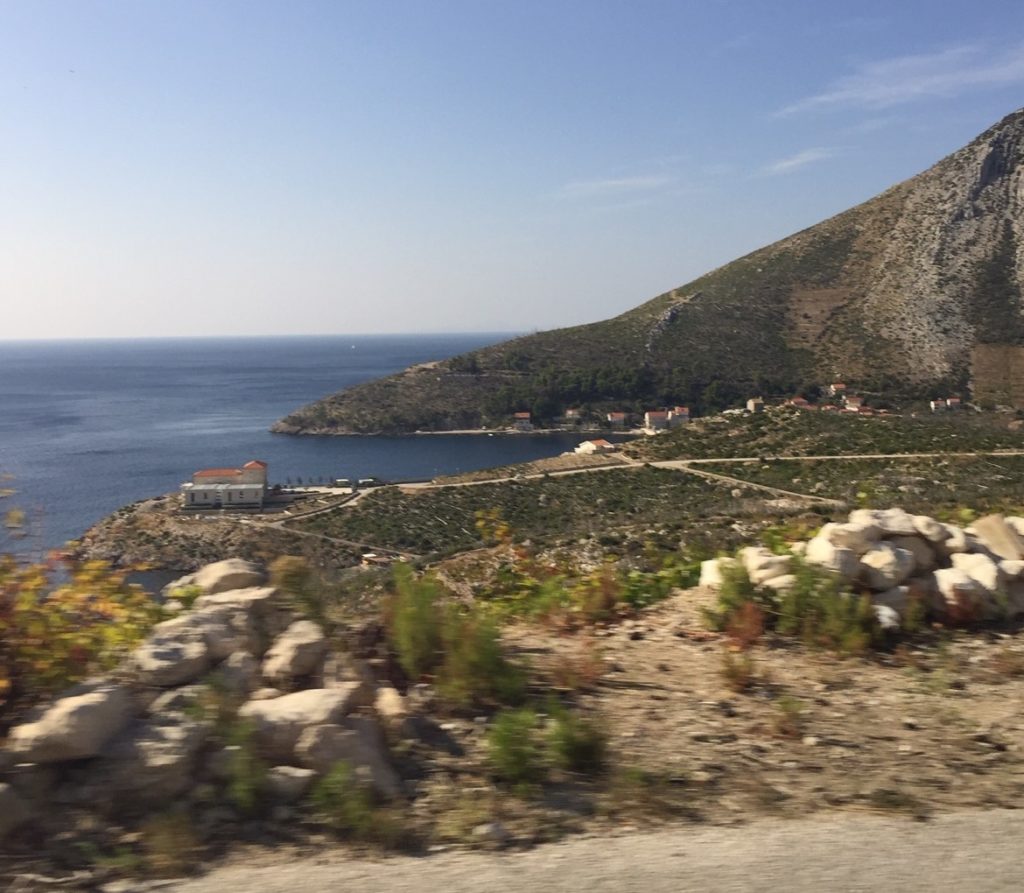
Having just spent a week on Croatia’s Southern Dalmatian Coast, we thought we’d share our wine learning with you, using the Grgić wines to highlight the two principal grapes grown and vinified on the Coast: Pošip (POE-ship) and Plavac Mali (PLAH-vahts MAH-lee).
While Grgić Vina is relatively new to Croatia, winemaking is not. Some historians claim that the Delmati, an Illyrian tribe, were cultivating wine there as early as the 11th Century B.C. Over time, the Greeks, Romans, Venetians and Austrians continued to exploit the unique terroir of Croatia, merging local strains with the cultivated vines brought from their own vineyards. Today, Croatia hosts more than 100 indigenous grapes – second only to Italy.
The most common white grape on the Dalmatian Coast of Croatia is Pošip. Wine made from this grape is medium-to-full bodied with notes of tropical fruits and green herbs. Most producers use stainless steel exclusively, allowing the natural acidity and minerality to shine.
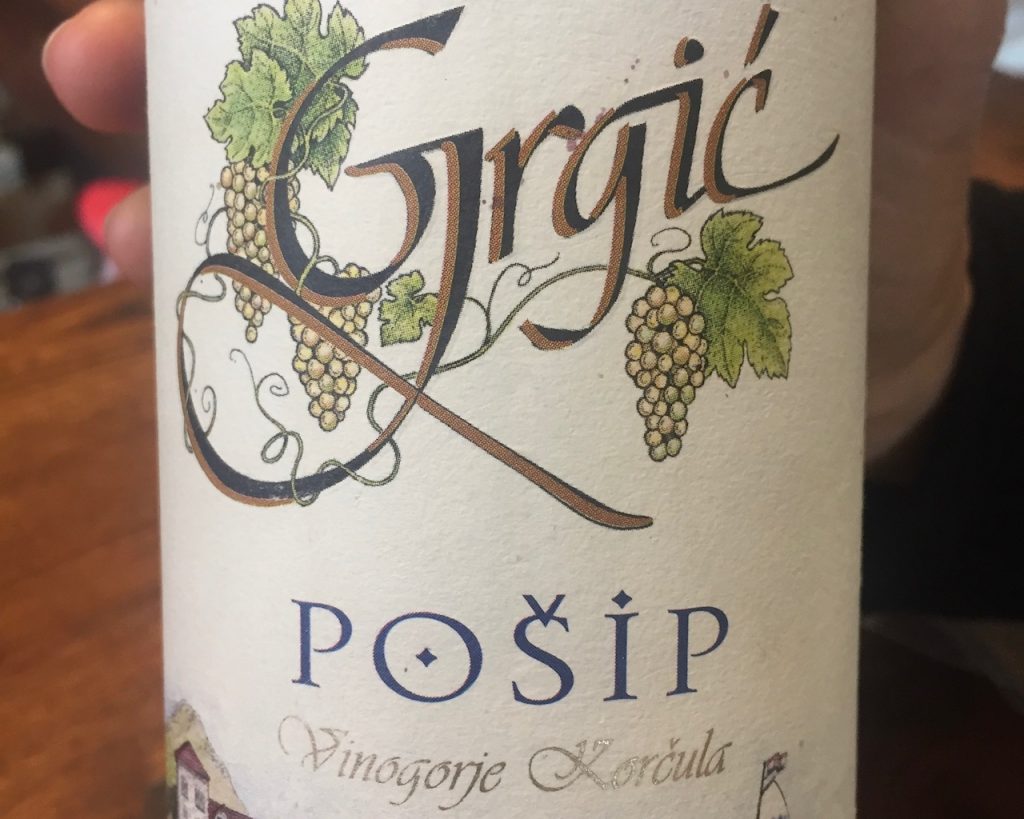
Grgch Posip 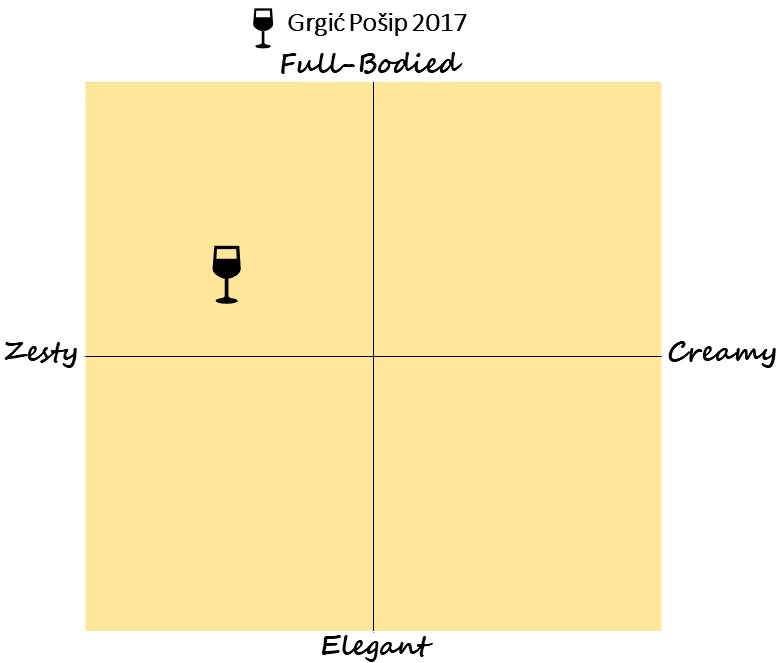
Pošip makes refreshing wines for seafood and lighter fare; the Grgić Pošip offers a richer, rounder mouthfeel than many we tasted, including recommended producers Korta Katarina, Krajančić and Kunjas. At this time, only the Grgić is available in the US; retail stores can be found on Wine-Searcher.com
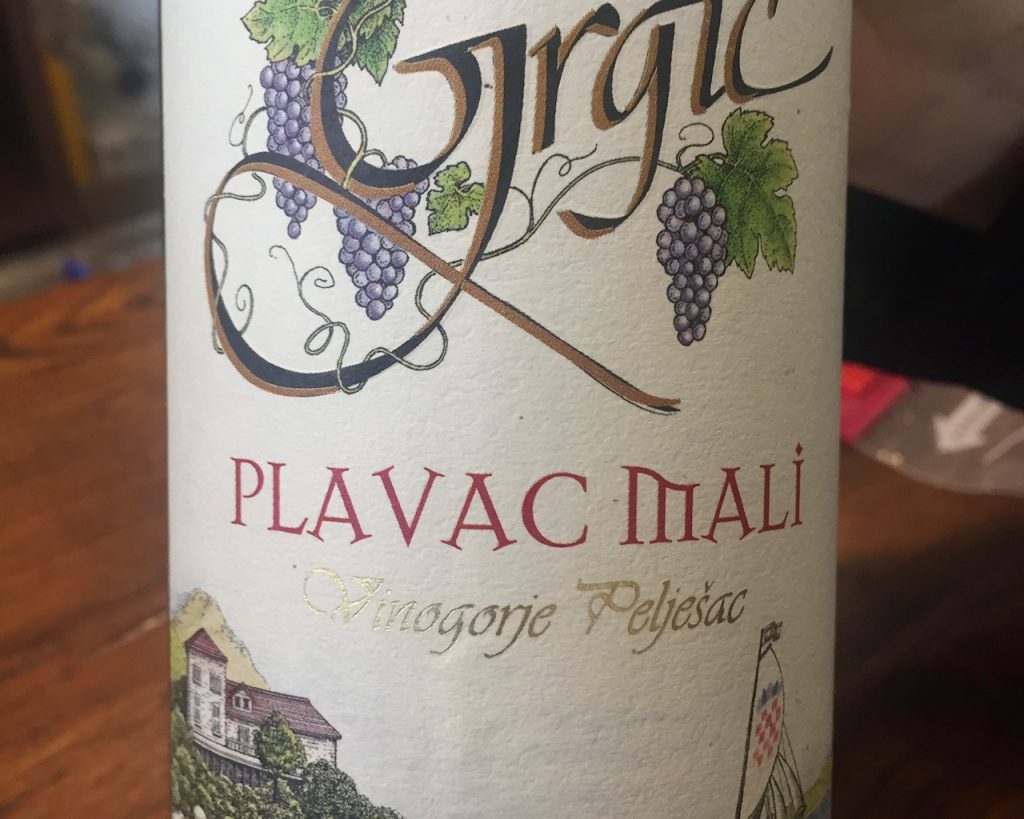
Grgch Plavac Mali 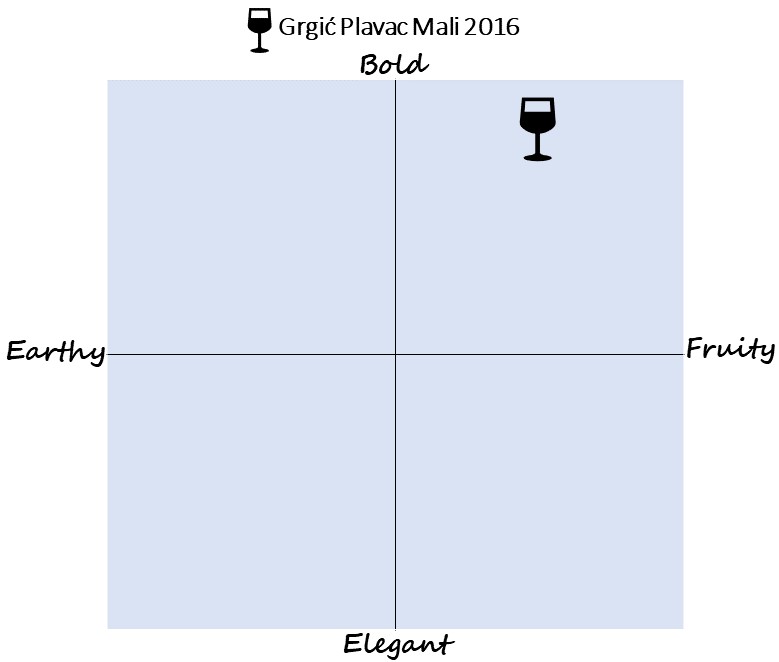
Plavac Mali is the leading red wine grape of the Dalmatian coast. An offspring of Zinfandel, the grape produces rich, aromatic, structured wines that are generally high in alcohol and tannins. The best wines come from grapes grown in the Dingač and Postup vineyard areas, located on the Peljesaĉ Peninsula. Pictured below, the vineyards of Hvar thrive on steep, rocky slopes cooled by the Adriatic breezes. Recommended producers are Saints Hills, Korta Katarina, Miloš and Grgić.
The Grgić Plavac Mali is attractive for its fruit-forward style and slightly softer tannins. Like all high-end Plavac, the wine has a robust perfume of plums, herbs and oak. On the palate the wine’s acidity is relatively low, but the black fruits are strong (like Syrah) and the long finish is tannic. Pair this wine with fatty, grilled meats or braised short ribs.
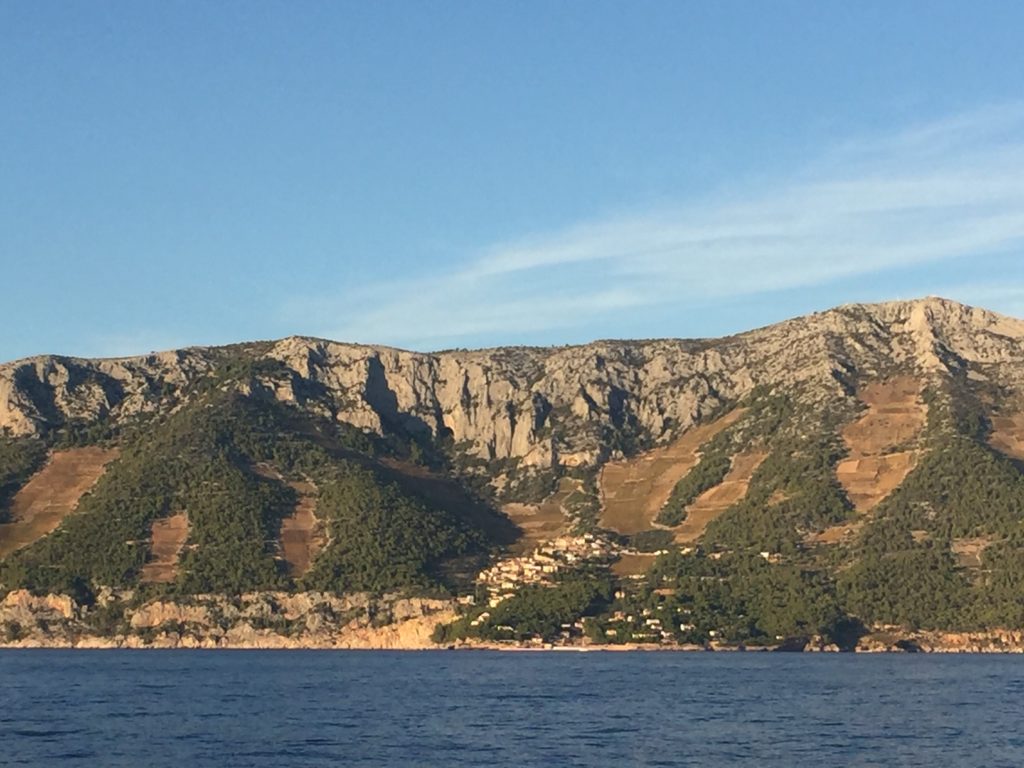
The Croatians have, over time, developed a taste for this highly tannic red wine that American palates may find challenging. As such, we recommend seeking out aged Plavac Mali, where the tannins have softened slightly. In our view, the 2009 Korta Katarina Riserva Plavac Mali was a beautiful expression of the grape. Look for it if you go to Croatia as it is very difficult to find in the US.
Bear in mind the Dalmatian Coast is not a wine destination; it’s not Italy or France. It is, however, noted for its ancient cities (Split, Dubrovnik & Korĉula), National parks (Krka and Mljet) and beaches with pristine waters for snorkeling and sailing. Menus are seafood and pasta-centric, with local wines ruling the restaurant wine lists and wine stores. So, if you go, print this post and bring it along.
Finally, because the food culture is centered on seafood, we thought you should be aware of a few other local white wines beside Pošip:
Grk (Gerk) – a grape grown around Lumbarda in eastern Korčula. Full-bodied and well-balanced, with a pleasant touch of bitterness on the finish. Look for Bire Winery’s Grk.
Malvazija Istarska (mal-VAHZ-ee-yah ih-STAR-skah) – the flagship white grape of the Istrian peninsula. Full-bodied, these wines are often oaked and deliver a round mouthfeel and creamy finish. Look for Coronica Gran Malvazija and Kozlović Santa Lucia.
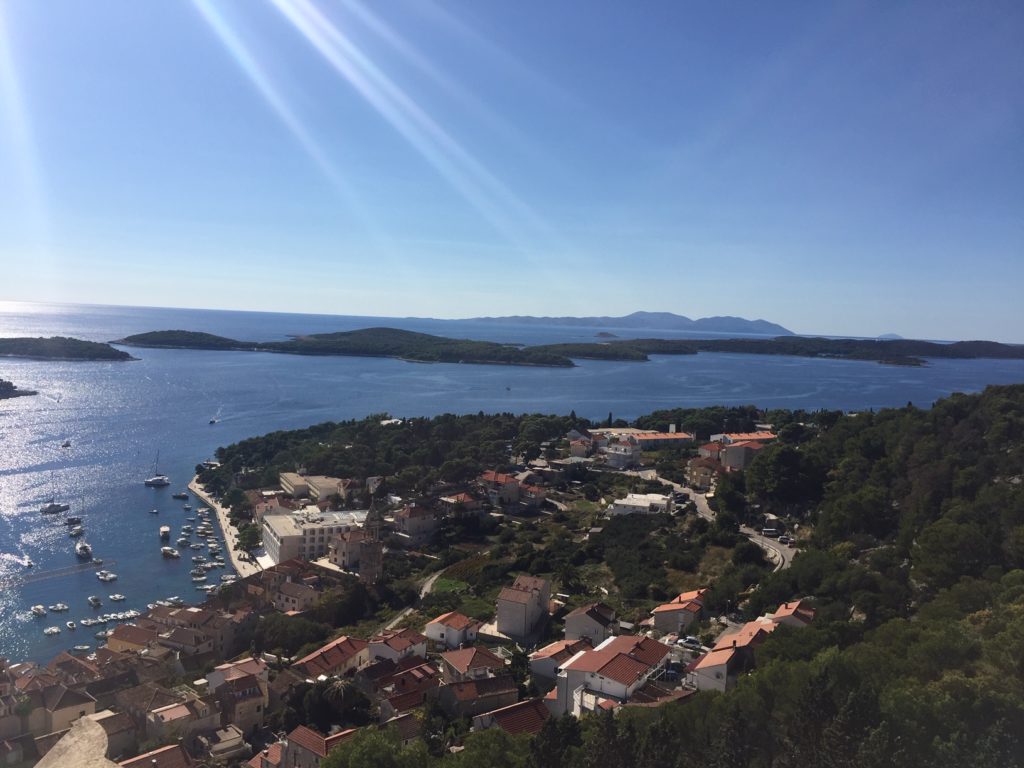
Croatia’s Dalmatian Coast: Stunning vistas, ancient cities, unique wines, the freshest seafood simply prepared. What’s not to like?
Izumi Niida says
Hi! This is Izumi. So beautiful scenery!
Looking forward to hearing from you the detailed story.
Please have a safe flight!We all family are waiting for your coming!!
Steven says
Can’t wait to travel to your beautiful country. Thanks for reading my blog and commenting. See you soon!
Eben says
Another fantastic post, thanks for sharing all this data with us. Now if I can just get rid of that pesky work so we can travel more…
Steven says
Thanks for your note, Eben. Think of it this way: travel will be much more rewarding when your kids are old enough to enjoy, appreciate and remember it.
Thomas Lansen says
Very informative post. I did not even realize that Grgich had returned to Dalmatia. Great background information, especially the historical information.
Steven says
Thanks for commenting, Tom. The entire coastal area was strategic for trade, hence the rich history of Roman, Greek and Venetian influence. A bonus was the low cost of hotels, restaurants and local wine.